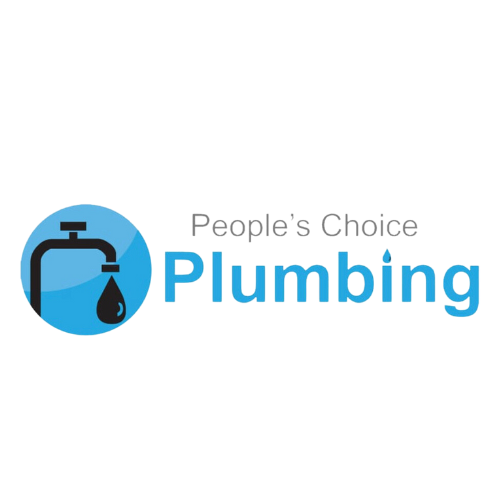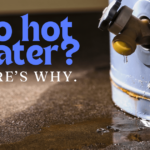Understanding Pressure Relief Valves: A Guide for Homeowners
Hey there, homeowners! Today, I want to talk about a small but mighty component that plays a crucial role in keeping your home safe and your plumbing system running smoothly: the pressure relief valve (PRV). As a professional commercial plumber, I’ve seen firsthand the importance of these valves, and I believe every homeowner should understand what they are, how they work, and why they are essential. So, let’s dive in!
What is a Pressure Relief Valve?
A pressure relief valve is a safety device designed to protect your plumbing system from excessive pressure. Think of it as a safety net that prevents your water heater or other pressurized systems from turning into a ticking time bomb. When the pressure inside a system exceeds a predetermined level, the PRV automatically opens to release the excess pressure, ensuring everything stays within safe limits.
How Does a Pressure Relief Valve Work?
The basic mechanism of a PRV is quite simple yet highly effective. Most PRVs are spring-loaded, meaning they use a spring to keep the valve closed under normal conditions. When the pressure inside the system rises above the valve’s set point, the force of the pressure overcomes the spring tension, causing the valve to open. This allows the excess pressure to escape, usually through a discharge pipe, until the pressure drops back to a safe level. Once the pressure is reduced, the spring force closes the valve again.
Types of Pressure Relief Valves
There are several types of PRVs, each designed for specific applications:
- Spring-Loaded PRVs: These are the most common type and are typically used in systems with relatively constant pressure. They operate using a spring to maintain the valve in the closed position until the pressure exceeds the set point.
- Pilot-Operated PRVs: These valves use a pilot valve to control the opening and closing of the main valve. They are ideal for systems with fluctuating pressures, as the pilot valve can be adjusted to maintain a specific pressure range.
- Balanced Bellows PRVs: These valves use balanced bellows to sense the pressure and control the valve’s operation. They are often used in applications where the process fluid is corrosive or where tight shut-off and high accuracy are required.
- Liquid Relief Valves: Specifically designed for liquid applications, these valves prevent overpressure in pipelines by allowing a small amount of liquid to escape when the pressure exceeds a set point.
Why Should Homeowners Consider Installing Pressure Relief Valves?
Now that you know what a PRV is and how it works, let’s discuss why you should consider installing one in your home.
1. Safety
The primary reason to install a PRV is safety. Overpressure situations can lead to catastrophic equipment failure, which can cause significant damage to your home and pose serious risks to your family’s safety. A PRV helps prevent these dangerous situations by automatically releasing excess pressure, ensuring your system operates within safe limits.
2. Compliance with Regulations
Many regulatory bodies require the installation of PRVs in specific applications to ensure safety standards are met. For example, the International Plumbing Code (IPC) and the International Residential Code (IRC) have specific requirements for the installation of PRVs on water heaters and other pressurized systems. By installing a PRV, you ensure your home complies with these regulations, avoiding potential fines and ensuring your system is up to code.
3. Preventing Damage and Costly Repairs
Excessive pressure can cause leaks, parts failures, and even complete system breakdowns. These issues can lead to costly repairs and significant downtime. By installing a PRV, you can prevent these problems from occurring, saving you money in the long run and ensuring your system operates efficiently.
4. Extending Equipment Lifespan
High pressure can put a lot of stress on your plumbing system and its components, leading to premature wear and tear. A PRV helps maintain a consistent pressure level, reducing the strain on your system and extending the lifespan of your equipment.
5. Peace of Mind
Knowing that your plumbing system is protected by a PRV can give you peace of mind. You won’t have to worry about unexpected overpressure situations causing damage to your home or putting your family’s safety at risk. It’s a small investment that can provide significant benefits in terms of safety and reliability.
Installation and Maintenance Tips
If you’re convinced that a PRV is a worthwhile addition to your home, here are some tips for installation and maintenance:
1. Professional Installation
While some homeowners may feel comfortable installing a PRV themselves, I highly recommend hiring a professional plumber for the job. Proper installation is crucial to ensure the valve functions correctly and complies with local codes and regulations. A professional plumber will have the expertise and tools needed to install the valve safely and efficiently.
2. Regular Testing
Once your PRV is installed, it’s important to test it regularly to ensure it’s functioning properly. Most experts recommend testing the valve at least once a year. This involves slowly increasing the system pressure until the valve opens, then verifying that it closes properly once the pressure is reduced. If you’re not comfortable performing this test yourself, a professional plumber can do it for you.
3. Routine Maintenance
In addition to regular testing, routine maintenance is essential to keep your PRV in good working condition. This includes checking for signs of wear and tear, such as corrosion or leaks, and replacing the valve if necessary. A professional plumber can perform routine maintenance as part of your annual plumbing inspection.
4. Proper Storage and Handling
If you’re storing a PRV before installation, keep it in its original container in a clean, dry environment. Avoid using the valve’s handle or lever for lifting or carrying, as this can cause damage. Always follow the manufacturer’s guidelines for storage and handling to ensure the valve remains in good condition.
Common Issues and Troubleshooting
Even with proper installation and maintenance, PRVs can sometimes experience issues. Here are some common problems and troubleshooting tips:
1. Leaking Valve
If your PRV is leaking, it could be due to debris or foreign material preventing the valve from sealing properly. Try lifting the test lever to flush out any debris. If the valve continues to leak, it may need to be replaced.
2. Valve Not Opening
If the PRV doesn’t open when the pressure exceeds the set point, it could be due to a faulty spring or other internal components. In this case, the valve should be replaced immediately to ensure your system remains protected.
3. Frequent Opening
If your PRV is opening frequently, it could indicate that your system pressure is too close to the valve’s set point. This can cause the valve to “simmer” and leak. Consider adjusting the system pressure or installing a PRV with a higher set point.
Conclusion
In conclusion, a pressure relief valve is a critical safety component that every homeowner should consider installing. It protects your plumbing system from overpressure, ensures compliance with regulations, prevents costly damage and repairs, extends the lifespan of your equipment, and provides peace of mind. By understanding how PRVs work and following proper installation and maintenance practices, you can keep your home safe and your plumbing system running smoothly.If you have any questions or need assistance with installing or maintaining a PRV, don’t hesitate to contact a professional plumber. We’re here to help you ensure your home is safe and your plumbing system is in top-notch condition. Stay safe, and happy plumbing!






